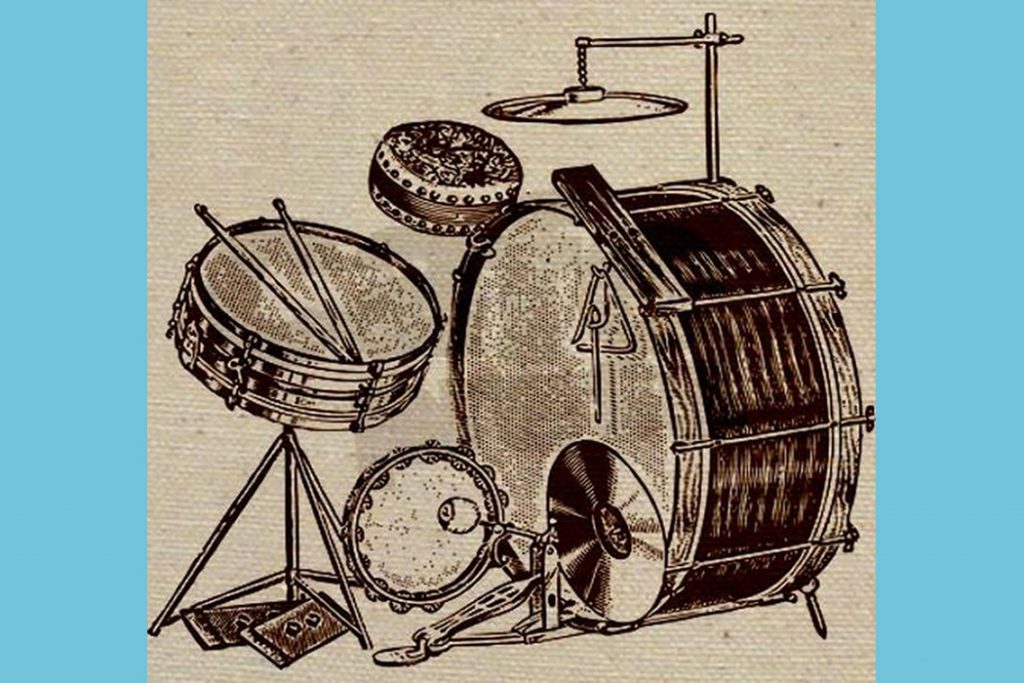+ Learn to craft more compelling beats and warped, broken rhythms with Son Lux’s Ian Chang. His innovative course is out now on Soundfly.
In the beginning, there was sound. Shortly after the first humans realized they could hear, someone must have had the bright idea of taking a stick and hitting it against a rock. The rest is history.
Although the geographical and ethnological origins of the first drums have probably been debated over by anthropologists and ethnomusicologists for centuries, it’s safe to say that the drum is one of the oldest instruments in human history (aside from our voice). Drums have shaped and defined cultures around the world, and have impacted how those cultures communicate and express themselves. And they continue to do so today around the globe.
But how did the modern drum kit that we know and love come into existence? The answer to that question is simple: completely by accident!
Immigrants coming to America between the late 1800s and early 20th century brought their various percussion instruments with them and the modern drum is the result of this cultural mixing. So how did the drum kit as we know form and how did it evolve into what it is today?
The Creation of the Modern Drum Set
The earliest drumming traditions started on the continent of Africa. However, the drum kit itself is an American invention. During the 1840s, drummers in marching bands as well as musical theatre companies in Europe and America would use a variety of individual hand percussion instruments. In order to cover more roles, by about the 1860s, bands started to experiment with multiple percussion instruments, combining them into what was then known as a trap set.
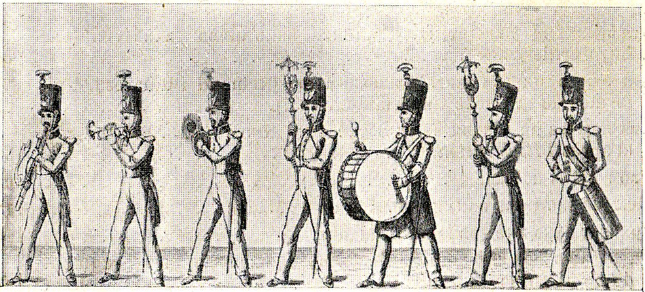
A technique known as double drumming was developed so that a drummer could play the bass drum and snare with sticks while using a pedal to control the cymbals. This pedal ended up influencing the creation of the original hi-hat, but at the time, it was known as the low boy.

Eventually bass drum pedals were developed, which allowed drummers to stand and play with their feet, keeping both of their hands free to play other instruments. During the early 1900s companies like Gretsch, Ludwig, and Slingerland began developing commercially marketable drum set equipment, from pedals to snare drums, brushes, and even entire kits. And, as drum equipment developed, so did the music.
Originally double drumming was a technique used to simulate the marching band sound of having two separate players playing both the bass drum and the snare drum. These simple marching beats would become more and more syncopated, due to the increasing influence and popularity of African and Caribbean rhythms.
The music that developed in the American South (New Orleans particularly) — ragtime and early jazz — was an amalgamation of both European and African cultures, traditional marching melodies, and blues-influenced harmonies combined with rhythms from the East, which had already made their way into second lines.
With new styles of music becoming associated with parties and nightlife, as opposed to the classical concert hall, the drum kit began to earn a constant place on the band stage.
As the modern drum set began to take shape, various other percussion instruments were added to the arsenal. Tom-tom drums were based on the traditional, cylindrically-shaped tuned drums of China and Japan. And early drum sets often contained woodblocks, small cymbals, and an array of other percussion instruments that could be used to make special effects for musical theatre or silent movies.
Drum sets from the 1920s also frequently included beautiful paintings, as signatures of the companies and artisans that manufactured them.
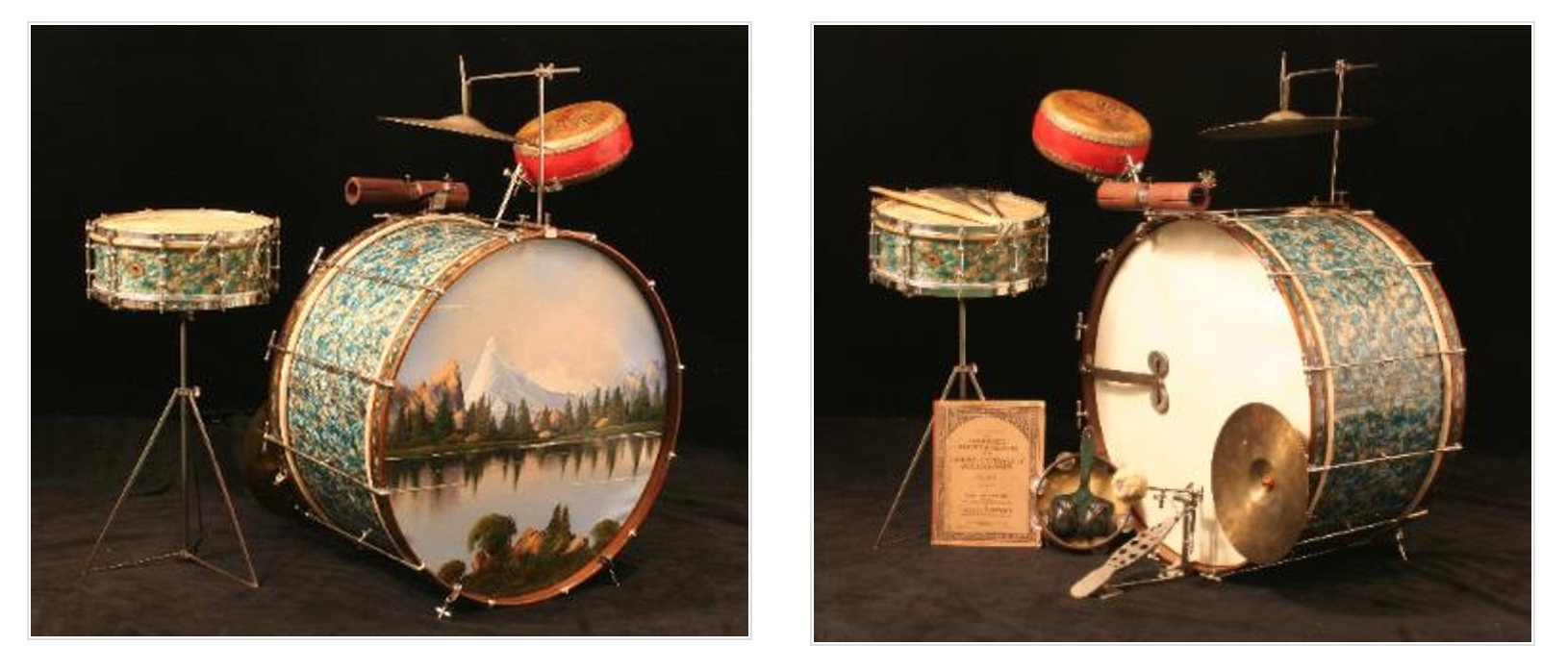
In 1929, a Turkish immigrant named Avedis Zildjian III continued his family’s cymbal manufacturing tradition, which had begun in 1618 in Constantinople, by setting up the first mainstream cymbal company in America. Founded in Quincy, Massachusetts, the Zildjian Cymbal Company went on to invent the most popular cymbal types used today, including the crash, ride, splash, sizzle, and hi-hats.
But their company really lucked out with the start of World War II. The increase in military bands meant that the Zildjian Company received war funds from the US Government to produce cymbals for the army and navy, while they continued to produce their mainstream cymbals. Copper and tin were both heavily rationed and regulated by the War Production Board, and Zildjan was one of only a handful of artisanal metal manufacturing companies to receive military support, though they had to reduce their master metalsmith staff to just three men.
Throughout the 1930s and ’40s, Avedis made friends with all the popular drummers of the time, including Gene Krupa, Chick Webb, “Papa” Jo Jones, and eventually Buddy Rich. These drummers not only marketed the company’s product but helped Avedis design cymbals that would actual change the way drummers played the drums. After he created thin ride cymbals, swing drummers began to move time-keeping away from the snare drum, which had been standard in earlier marching styles.
Innovative changes such as this would kick start the next era of drumming.
The Drums in Mainstream Music
As the drum set started to take form so did popular American music. By the late 1940s, swing drumming had morphed into a new form of jazz called bebop. Swing bands were usually large ensembles featuring many musicians and the drums were so big and loud that they could project over the entire ensemble. Not long after this era, jazz began to evolve into hard bop and club jazz, and large bands eventually gave way to smaller combos and ensembles.
Drummers didn’t need to play as loudly in these ensembles, and as recording technologies and microphones improved, drum kits were able to be recorded with greater clarity. This resulted in a greater emphasis on sound quality and musical finesse — as opposed to the steamroller energy of big band drummers. Much like punk music, bebop was the anti-establishment answer to the popular swing music of the ’20s and ’30s.
Bebop drummers started to prefer a simple four-piece setup (bass drum, snare drum, rack tom, floor tom) with the addition of one or two cymbals, and a hi-hat.
Drumming would take another huge leap forward in 1947 with Roy Brown’s “Good Rockin’ Tonight.” The song was done in the jump blues style, which is rhythmically sort of like a shuffle, and makes lyrical references to “rock” as a description of the musical style. Around the late ’40s and early ’50s, drummers who played on “race records” (78rpm blues and gospel records marketed primarily to African Americans and which would later go on to serve as the foundation for R&B) started incorporating Afro-Cuban rhythms from New Orleans and the Caribbean into a backbeat, with heavy accents on beats two and four.
One of the most popular rhythms at the time was later-dubbed the “Bo Diddley Beat” (we did an entire article on that!) and the shuffle.
One drummer who pioneered this new drumming vernacular, thus influencing rock ‘n’ roll and R&B, was Earl Palmer. Palmer is credited as being the most recorded drummer in history. He’s also responsible for modernizing the backbeat and recording classic songs for Little Richard, Fats Domino, Professor Longhair, Roy Brown, Sam Cooke, Ike and Tina Turner, The Beach Boys, The Supremes, BB King, and many more, and has appeared on countless soundtracks.
As drumming styles continued to develop so did the equipment.
In 1963, a frustrated percussionist from the Boston Symphony Orchestra decided that commercially available sticks and mallets were not good enough and decided to make his own. That’s when Vic Firth’s famous drumsticks were born. Firth’s company would go on to create the industry standard in stick and mallet manufacturing by patching sticks by pitch and weight as well as by creating the standard paper matchbox holster that most drumsticks are packaged in today.
Only a few years before Firth changed drumsticks forever, Remo Belli and Sam Muchnick had discovered their own innovation in drum heads. Drum heads had traditionally been made from calfskin and were hard to keep in tune due to weather fluctuations. After WWII, Belli decided to experiment with a film-based drum head and eventually settled on a polyester film known as mylar for its consistency of tone and because this material was more resistant to weather and water.
They called their company Remo. These heads were initially received with very little appreciation by the drumming community, but eventually Remo’s heads caught on and became the standard for drumhead companies
Elsewhere in the United States in the mid-1960s, funk music was beginning to catch on, and re-establish new waves of rhythmic complexity and loop-based composition. Rock ‘n’ roll was well-established as America’s favorite music, and so drummers started to become focal points for audiences and audio engineers alike. Drummers were now playing bigger venues and needed bigger and more powerful drums, as well as a wide variety of sounds to compete for attention with guitars, keyboards, and vocals.
Drum kit manufacturers started to pop up all over the world, using different materials such as wood, metal, and even synthetics such as acrylic and fiberglass.
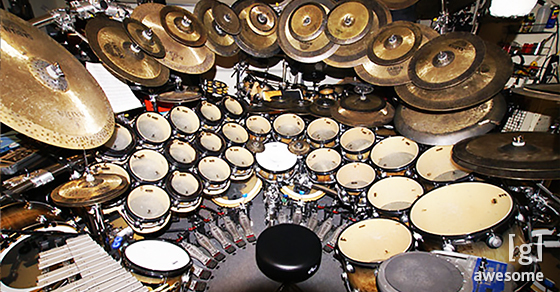
By the mid-1970s, fusion, math rock, and heavy metal had pushed the limits of what drummers could physically play, both technically and as a result of hugely expanding kits that included multiple racks of toms, gongs, and special cymbals. Bass drums even became as big as circus drums. And drummers started to use double kick pedals to play twice as fast, and even using multiple bass drums (although early jazz drummers such as Louie Bellson had experimented with that back in the late 1930s).
It seemed like drums couldn’t go much further than where they were now. Except that they did innovate, they became electronic. Enter: The drum machine.
Drum Machines, Drum Triggers, and The Future of Electronic Drum Sounds
Electronic rhythm boxes had actually been around since the 1940s and were simple metronomic machines meant simply to accompany a pianist or guitarist playing a cocktail jazz gig. These machines came with tape loops loaded with preset rhythms that couldn’t be altered very much. By the late 1970s, the innovations of companies such as Roland and Korg brought drum machines to the forefront of popular music.
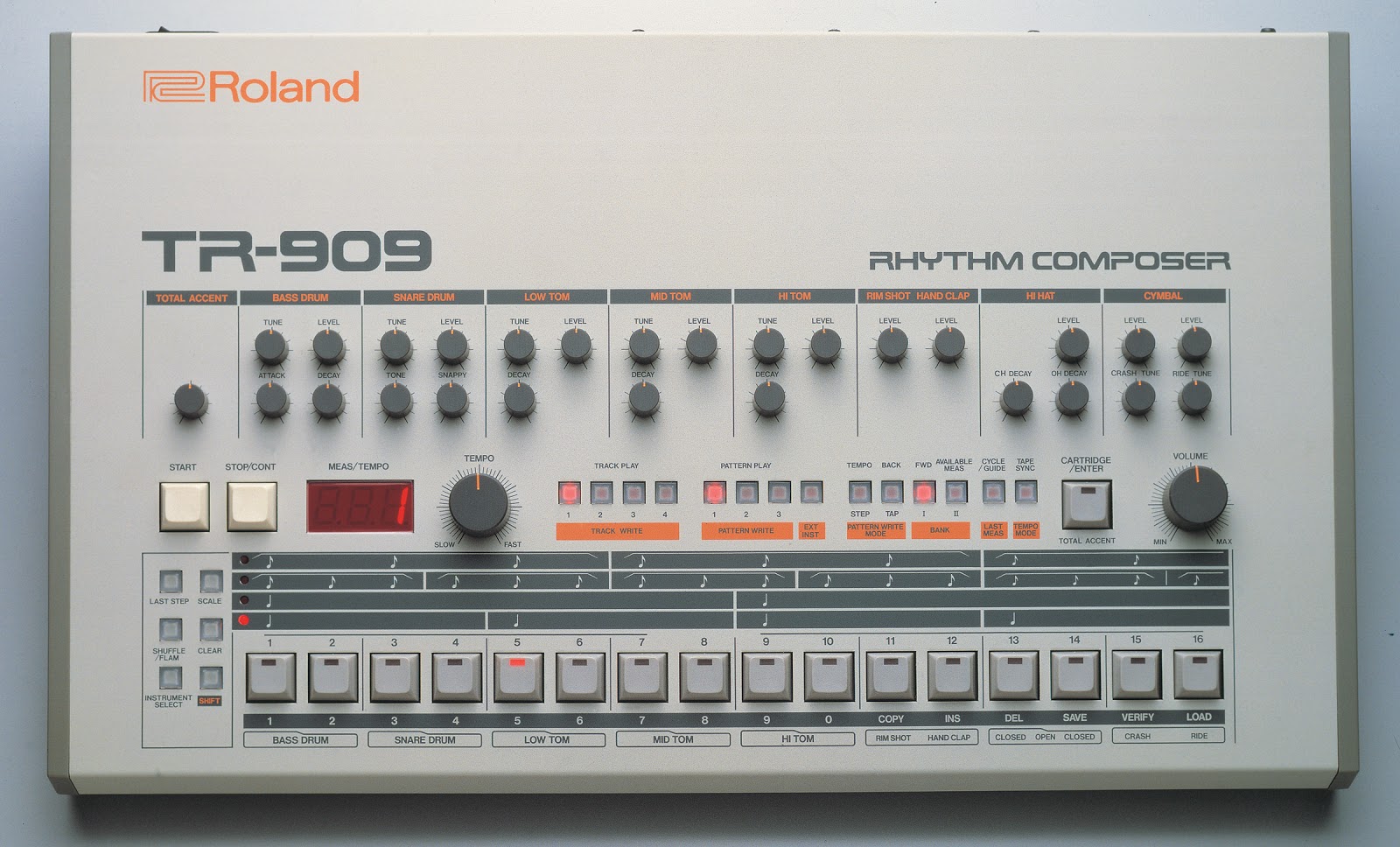
Marvin Gaye’s classic slow jam “Sexual Healing” was one of the first popular songs in the United States to primarily feature a drum machine (Roland’s TR-808) in place of a drummer. But artists such as Sly and the Family Stone, Robin Gibbs, and even Pink Floyd had been experimenting with drum machines and electronic drums since the early 1970s.
The Simmons company would make the first successful commercially-available electronic drum kits. These kits were heavily used in the early 1980s by bands such as Rush and Duran Duran. Eventually Roland and Yamaha would go on to make their own versions of electronic drum kits. And these would become the industry standard.
Some of the early electronic drums and drum machines sound terrible by today’s standards. But this innovation changed music forever. The first major change was computer-generated drum sounds. Instead of trying to sample and mimic acoustic drums, the Roland 808, 909, 707, and 606 had unique synthesized drum sounds that came right machines’ circuitry.
The second innovation in drum electronics that has perhaps sent us even further down the road, was the idea of quantized or computer-generated grooves. Drum machines can only play grooves that are metronomically exact without any fluctuation in the tempo, so the feel tends to be a bit rigid. Human drummers, on the other hand, can do a lot more to create flexible time feels, playing ahead of or behind the beat, etc.
But the convenience and “modernness” of this new electronic sound became increasingly popular as electronic dance music, techno, synthesizer pop, and disco took over dance floors around the world in the ’70s and ’80s.
The way people heard rhythm changed too.
Drummers still wanted ways to break free of the grid, and escape quantized tempos and beat patterns, while also being able to use this new world of synthesized drum sounds. And that’s what led to the creation of drum triggers: devices that cue an electronic sample when an acoustic drum is hit. It’s essentially a sensor that is usually connected to a drum machine or some sort of software.
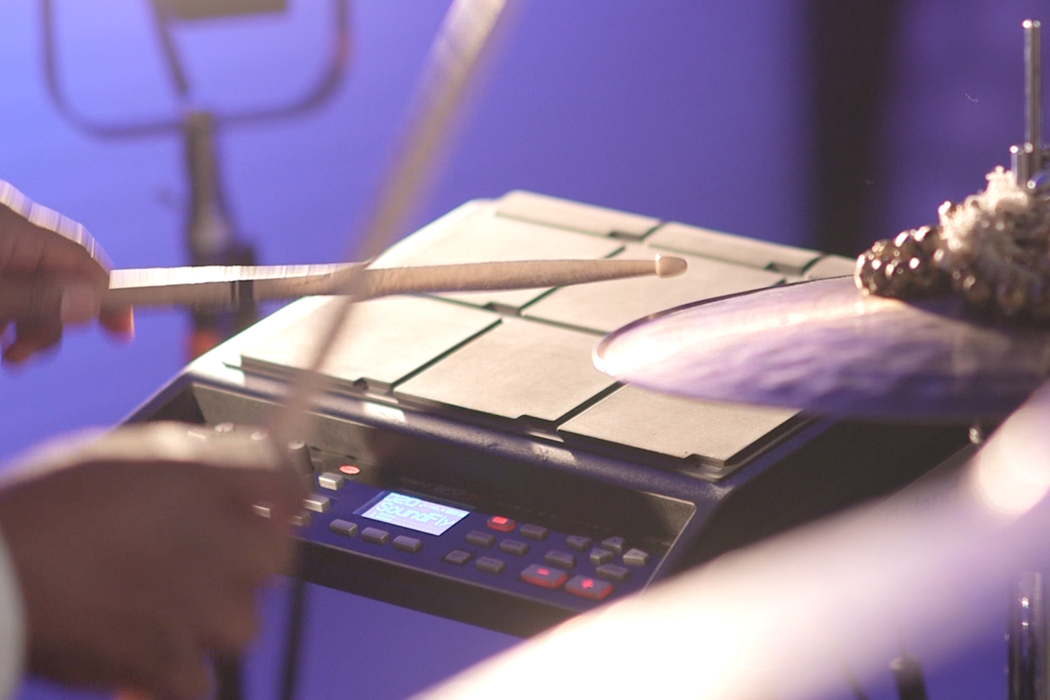
Once again Roland found themselves at the forefront of technological advancements for electronic drums. They introduced various series of electronic drums that not only triggered drum samples but could be used as MIDI instruments to trigger any sound. Their V Drum series introduced the mesh drum head which now allowed drummers to get a more realistic feel when playing electronic drums. And Roland made numerous MIDI sensors specifically for drums, including a very popular sampler called the SPD (which features the SPD-SX and SPD-30).
In order to both perform and compete with today’s top hits, which skew electronic, it is commonplace for drummers to augment their acoustic kits with an SPD or other drum machine pad, as well as with MIDI-enabled triggers.
And what’s more, they’re finding acoustic ways to mimic electronic noises and sounds too with tape, stacked cymbals and objects, motorized gadgets, etc. Qasim Naqvi is known for being able to mimic the style of sampled and chopped drum beats with his acoustic kit, Graham Dunning makes electronic dance music using nothing but contact miked prepared turntables, Chris Dave is simply a one-man syncopated machine with his kit, and Ian Chang is known for his ability to apply electronic concepts to his acoustic kit via simple playable techniques.
And just like his band mate in Son Lux, Ryan Lott, Ian Chang has a new online course out on Soundfly that breaks down and demystifies his process, and teaches his grandest pieces of advice for creating more compelling beats with abstract rhythms and warped beats. Check it out!
As the drum set continues to evolve and more musicians experiment with blurring the boundaries between acoustic and electronic music, a new company has created an innovative approach to drum triggers. Sunhouse’s Sensory Percussion maps the different regions of a drum surface and allows a drummer to trigger multiple electronic samples from various regions or other spatial and acoustic parameters of the drum.
This revolutionary technology now gives drummers the complete freedom to turn any type of drum set into any instrument or sound imaginable.
It’s unclear where the drum set will go next, but it’s clear that this instrument will continue to evolve well into the future. Now go grab a pair of sticks and make some noise!
Keep on Grooving…
Continue your learning with hundreds of lessons on songwriting, mixing, recording and production, composing, beat making, and more on Soundfly, with artist-led courses by Kimbra, Com Truise, Jlin, Kiefer, RJD2, and our new The Pocket Queen: Moving at Your Own Tempo.
